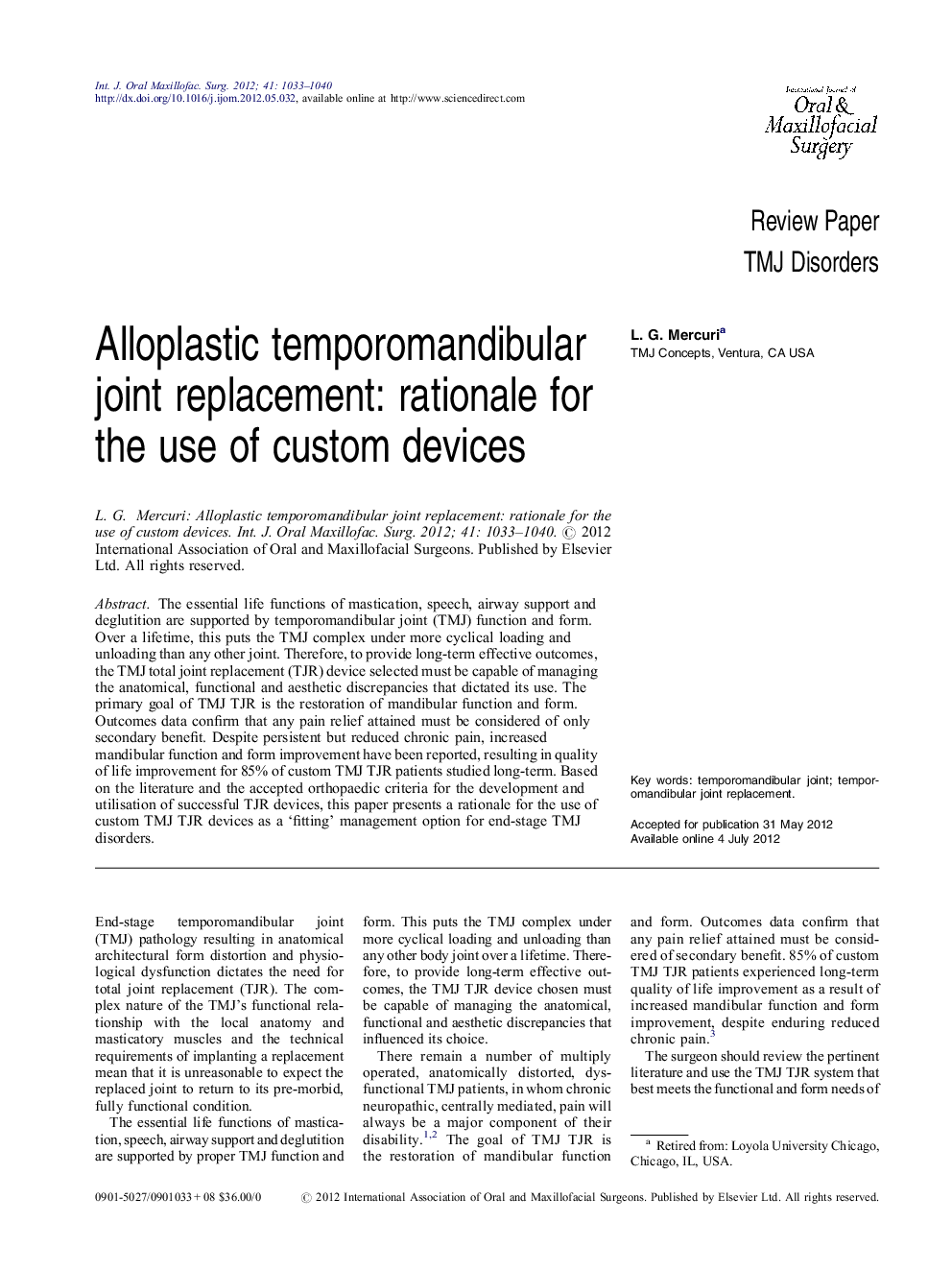| Article ID | Journal | Published Year | Pages | File Type |
|---|---|---|---|---|
| 3133236 | International Journal of Oral and Maxillofacial Surgery | 2012 | 8 Pages |
The essential life functions of mastication, speech, airway support and deglutition are supported by temporomandibular joint (TMJ) function and form. Over a lifetime, this puts the TMJ complex under more cyclical loading and unloading than any other joint. Therefore, to provide long-term effective outcomes, the TMJ total joint replacement (TJR) device selected must be capable of managing the anatomical, functional and aesthetic discrepancies that dictated its use. The primary goal of TMJ TJR is the restoration of mandibular function and form. Outcomes data confirm that any pain relief attained must be considered of only secondary benefit. Despite persistent but reduced chronic pain, increased mandibular function and form improvement have been reported, resulting in quality of life improvement for 85% of custom TMJ TJR patients studied long-term. Based on the literature and the accepted orthopaedic criteria for the development and utilisation of successful TJR devices, this paper presents a rationale for the use of custom TMJ TJR devices as a ‘fitting’ management option for end-stage TMJ disorders.
